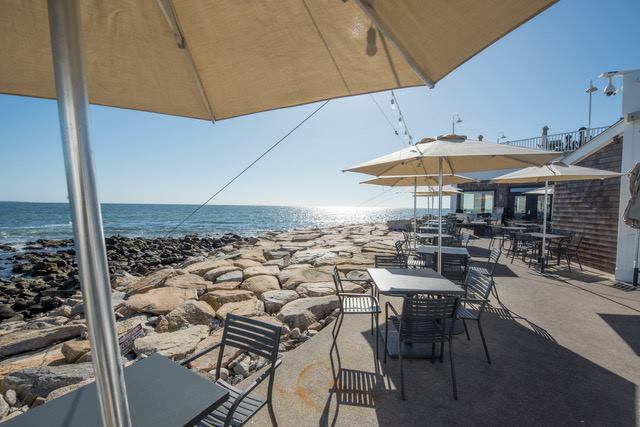Table Of Content

The Glass House was home to Philip Johnson and his partner, influential curator David Whitney, a place where they hosted many of the most notable architects, artists and designers of their time. Now the Glass House offers a safe space for honestly exploring the multifaceted and sometimes difficult history where art, architecture and social justice intersect—including Philip Johnson’s controversial personal history. There is a pure glass tour that only visits the house and is an hour long. The Hodgson House is sited on a slight knoll on a property that has both wooded sections and grassy fields. It is a one-story, flat roofed, brick and glass-walled building constructed in two phases per the designs of Philip Johnson. According to William Earls, author of The Harvard Five in New Canaan, Johnson received the commission for the house after introducing himself to a couple who was looking at the site across the street from his Glass House.
Philip Johnson's Glass House Opens to the Public
This property, which is now nearly 50 acres in size due to additional purchases by Johnson, is also an elaborate landscape. Johnson and Whitney both shared a fascination with the grounds and its design, a project that lasted for decades. In particular, Johnson understood the relationship between architecture and landscape as an essential one.
Da Monsta
Shigeru Ban: The Paper Log House Exhibitions - MutualArt.com
Shigeru Ban: The Paper Log House Exhibitions.
Posted: Wed, 24 Apr 2024 03:39:10 GMT [source]
Either way, the "structured warp" of the building certainly makes an impression, and the space serves as a video viewing room and, not trivially, houses the estate's only public bathroom. The floor plan of the Glass House reveals a fairly traditional living space. Although there are no walls, Philip Johnson referred to areas within the rectangular, loft-like space as “rooms.” There is a kitchen, dining room, living room, bedroom, hearth area, bathroom, and an entrance area. Despite the very modern style of the house, the layout could easily be a colonial home, something Johnson noted. Explore the Glass House campus at your own pace on days dedicated to self-guided visits to the site.
Philip Johnson Glass House Exhibition
There is something intimidating to people about the restraint such an existence would demand, as if the house itself were silently judging our own messy choices. Still, the appeal of all that self-control, that rigor, is practically narcotic. The Paper Log was originally conceived in 1995 as a shelter for Vietnamese refugees displaced by the Great Hands-on Earthquake, exemplifying Ban’s commitment to affordability and sustainability and the use of recycled materials. According to Shigeru Ban, “If a building is loved, it becomes permanent.” Ultimately, the work aims to challenge conventional notions of permanence and material strength.
It’s a small house, to be sure — just one room — and it’s made mostly of paper, but it’s more resilient than it looks. At the architect Philip Johnson’s former estate in New Canaan, Conn., there has long been a Glass House and a Brick House. – Enhance your experience at The Glass House with our Digital Guide, a part of Bloomberg Connects. – The Visitor Center is located across the street from the New Canaan train station.
Space Age Lodge and Restaurant
Neither repaired nor replaced, Night’s absence from the Glass House still lingers like a ghost of Modernism past. Johnson is widely considered one of the most influential modern American architects, and his legacy is well preserved at his estate in New Canaan, Connecticut. On Johnson’s property is his famous Glass House, which was completed in 1949.

Glass House Design Store
The Philip Johnson Brick House Is Finally Being Restored - Observer
The Philip Johnson Brick House Is Finally Being Restored.
Posted: Thu, 16 Nov 2023 08:00:00 GMT [source]
The proposal uses cross-laminated wood and joints to create a safe and welcoming environment for healing and recuperating. Additionally, Shigeru Ban recently developed an improved version of the temporary housing developed to help those affected by the Turkey-Syria earthquake, using an upgraded version of the paper tube system. Philip Johnson was an early admirer of Stella, and he avidly collected the artist’s work throughout his life.
The guest house, connected to the Glass House with a stone path that lays over the expansive lawn immediately surrounding it, is a heavy brick structure, contrasting the extreme lightness and transparency expressed in the Glass House. In finding that little knoll, I was in the middle of the woods in the middle of the winter and I almost didn’t find it. I found a great oak tree and I hung a whole design on the oak tree and the knoll because this place. Don’t forget, it is more of a landscape park than it is a work of architecture, anyhow. It’s more a memory of the English parks of the 18th century, which are called English gardens, for some reason. There’s no garden anywhere, I mean, there are no flowers, as Americans think of gardens.
In particular, Johnson would develop a relationship with Mies that would lead to not only Mies designing an interior for Johnson’s 1930 home in New York but also a collaboration between both men on Manhattan’s Seagram Building in the 1950s. The Glass House, the transparent home Philip Johnson famously built for himself in 1949, has become such an icon of midcentury design that it can sometimes eclipse the architect’s manifold other accomplishments. I was reminded of this at a recent celebration of the 65th anniversary of the New Canaan, Connecticut, property hosted by the Glass House director Henry Urbach, Architectural Digest editor in chief Margaret Russell, and House of Krug Champagne president Margareth Henriquez. Each of the four exterior walls of the Glass House is punctuated by a centrally located glass door that opens onto the landscape, providing breathtaking views and creating a seamless connection between the interior and exterior spaces. Freud links this sensation of dread and horror to the idea of the house and its heimlich (homey) interior, which through unexpected changes is transformed into an unheimlich space. In that context, we might see Johnson’s house as a Polish farmhouse “purified” by the fire of war of everything but its architectural “essence,” enclosed in a glass box to preserve it intact on a pastoral site in Connecticut, thus apparently exorcising the horror.
When Johnson donated the Glass House property to the National Trust for Historic Preservation, he specifically outlined his wish to feature Stella’s artwork at the Glass House. Visitors to the Scarlatti Kirkpatrick exhibit will find a rich context in which they can see the trajectory of the artist’s career, as earlier Stella works from Johnson’s personal collection now hang in the Glass House’s Painting Gallery. All tours begin from the visitor's center in downtown New Canaan, Connecticut.
Is it a series of deeply felt attempts at engaging and transforming the discipline that had, to quote architectural historian Paolo Portoghesi, “too many inhibitions”? Is there a hidden sense of inadequacy that drives a designer to more and more outlandish stylistic experiments? Certainly this is a subject that calls for an analysis beyond the usual categories of art history, architectural criticism, and political commentary. The Glass House is located in New Canaan, Connecticut; the Glass House Visitors Center, where all tours begin, is at 199 Elm Street, right across the street from the MTA's New Canaan Metro-North train station. One- and two-hour timed ticketed tours are conducted every Monday, Friday and Saturday, and three-hour self-guided tours are held on Sundays. Its planned restoration, to address longstanding leaks and water damage, languished even as other structures by Johnson on the rolling 49-acre campus, including the 1970 Sculpture Gallery, got their own updates.
The basic concept for Johnson's glass house was borrowed from Ludwig Mies van der Rohe, who was designing the glass-and-steel Farnsworth House during the same period. Unlike the Farnsworth House, however, Philip Johnson's home is symmetrical and sits solidly on the ground. The interior space is divided by low walnut cabinets and a brick cylinder that contains the bathroom. At MoMA, Johnson worked with its founding director Alfred H. Barr Jr. and also with architectural historian Henry-Russell Hitchcock. He was co-curator with Hitchcock on the seminal 1932 show of modern architecture and book, The International Style, and later with Barr on Machine Art (1934) as well as retrospectives on Frank Lloyd Wright (1947) and Mies van der Rohe (1949), among many other exhibitions.
Parking is available in a municipal metered lot on Park Street, approximately 5 minutes walk from the Visitor Center. Parking passes which allow for all-day parking in metered lots can be purchased for $4.00 at checkout. Please select “parking pass” at ticket checkout to have parking pass included in your order. Otherwise, metered parking is $1 per hour (3 hour maximum) payable by cash or credit card at the kiosk in the parking lot.
There is a clear relationship between the design of Farnsworth and that of the Glass House, albeit with significant differences, and today both the Farnsworth House and the Glass House are historic sites owned and operated by the National Trust for Historic Preservation. During those undergraduate years, he took off substantial time to travel throughout Europe ( ). Those early trips, especially to Berlin and the new school of architecture and design in Dessau, the Bauhaus, were especially influential on him and led to his early work at The Museum of Modern Art.
Johnson's Pavilion in the Pond is visible from the Glass House, but if you're on the self-guided tour you can hike down there and check it out up close. The Glass House itself is the focal point of any tour, whether self-guided or not. And you can revisit it as many times as you want during your adventure – walking the perimeter, gazing out at the incredible views, you’ll learn new things from the on-site educator each time. The residence Johnson built for himself in 1949 suggests a life pared down to Platonic essentials—and triumphantly ready for fishbowl scrutiny.

No comments:
Post a Comment